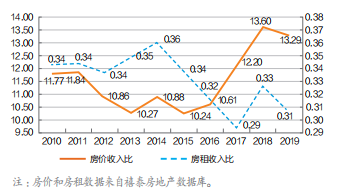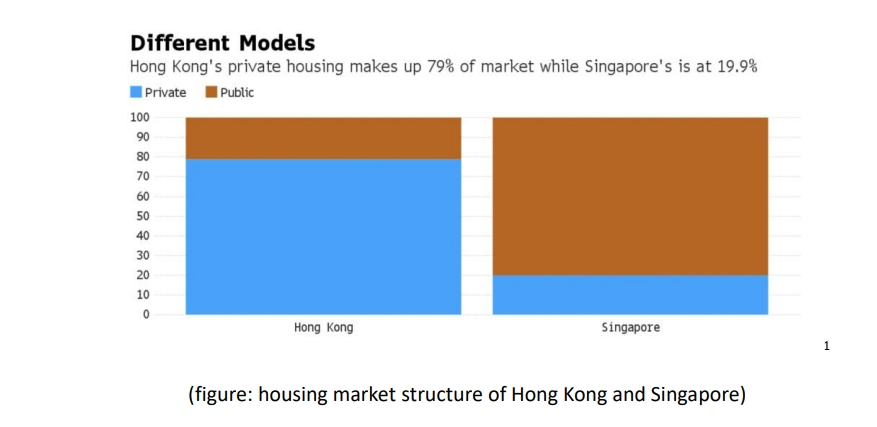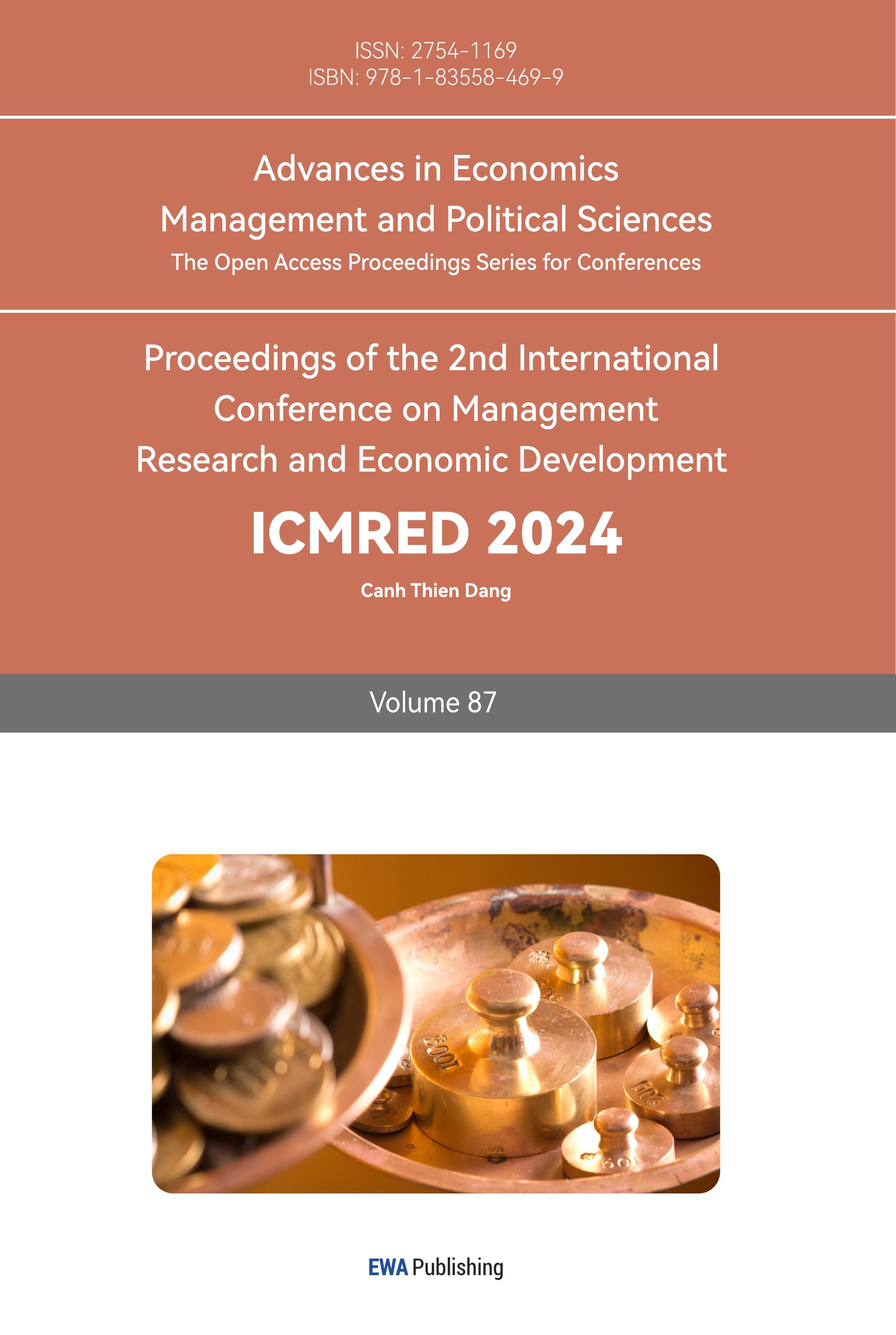1. Introduction
Strengthening the housing safety net and creating a framework for sustainable housing are essential steps to address the shortcomings in the legislation governing the rental market. As of right now, China's rental housing system has done a good job of addressing the housing needs of low-income families and urban poor people.
To address the deficiencies in housing rental market policies, enhance the housing security system, and establish a sustainable housing mechanism are crucial. Currently, China's rental housing security system has effectively tackled the housing issue for the lowest-income and impoverished families in urban areas.
Therefore, it is of paramount importance for China's affordable rental housing policy to restore the shortcomings of existing rental policies, broaden the coverage of the housing security system to achieve comprehensive protection, enhance the overall framework of this system, and establish a long-term mechanism that ensures 'housing for everyone. By collecting data and collating a large amount of literature and comparisons, this paper demonstrated the importance and mechanism of public housing allocation in Hong Kong.
Hong Kong Housing Authority (which be called HA) has established a Public Rental Housing (which named PRH) particular system to facilitate the f air and orderly allocation of PRH flats to eligible applicants. Public housing in Hong Kong is similar to the public rental housing system in the mainland, where the government rents housing to eligible Hong Kong residents at preferential rents. Nowadays, there are two kinds of housing policies. According to the” Housing situation and housing supply in the official situation and housing supply in Hong Kong “. During the past of years, there is a dramatic data about Hong Kong housing.
The population of households living in Hong Kong with home ownership has grown from 2011 52.1% decreased to 48.6% in 2021, with 4 young families living in self-owned homes It dropped from 49.7% to 41.5% during the same period. Also, in the private housing market, driven long-term poor supply and low interest rates which be called "Rigid Demand". The soaring sales prices of private homes have made it difficult for the public to afford home ownership, and the Home Ownership Burden Index 3 reached an extremely high level of 74% in the fourth quarter of 2021. To be specific, it has above the fourth quarter of 2011 45%.
2. Description
In China, the Rental housing policy also result the thing that low- and middle-income households are hard to afford to purchase or rent housing. The Housing Affordability Index (which be called HAI) is an internationally accepted index could measure that if a household's income is able to burden its housing expenses, cost, and consists of a house price affordability index and a rent affordability index, which are expressed in terms of house price-to-income ratios and rent-to-income ratios, respectively. This figure that the house price-to-income ratio for low- and middle-income earners in 35 large and medium-sized cities in China from 2010 to 2019 first declined and then increased, from 11.77 in 2010 to 10.24 in 2015, and then to 13.60 in 2018; the rent-to-income ratio showed a general downward trend, from 0.34 in 2010 to 0.29 in 2017 and the rent-to-income ratio rose again to 0.33 in 2018 in figure 1.

Figure 1: House price-to-income ratios
House price-to-income ratios between three and six times are deemed affordable, according to World Bank empirical statistics (Hamer, 1993). A rent-to-income ratio of less than 0.3 is considered affordable for residents' income at the 30% level, according to the U.S. Department of Housing and Urban Development's (HUD) indication. Consequently, both the rent-to-income ratio and the home price-to-income ratio are high in China's large and medium-sized cities, with the house price-to-income ratio being particularly high, making it difficult for low- and middle-income earners to afford to buy or rent a place. Since this group's members are primarily young people and recent citizens who live in major cities, China's policy of guaranteed rental housing may efficiently meet their housing needs.
3. Analysis on the problem
Then, come back to the Hong Kong’s policy. In the following, this paper will explore the advantages and disadvantages of the public rental housing program through a literature review. First and foremost, the goal of the public rental housing program has always been to provide low- and middle-class individuals with inexpensive homes. According to public data the average cost of public rental housing in Hong Kong in 2023 is only HK$67 per square meter. Last but not least, the public housing system is crucial to the management of the real estate sector. "Hong Kong Real Estate Century" Professor Feng Bangyan of Jinan University notes that the public housing system's implementation not only effectively slows the growth of squatter areas but also significantly contributes to social stability by slowing the sharp increase in the costs and rents of commercial real estate. Wen Linfeng also holds in his book "Housing Public Policy" that the public housing system has accomplished macro planning for residential growth by managing the supply of land and modifying urban planning to maximize land usage [1-3].
Li Yi's book "Hong Kong, Fortunately, there is Public Housing" claims that this home security system promotes social mobility between various classes, lessens the gap between the rich and the poor, and maintains the harmony and prosperity of Hong Kong society [4,5].
However, there are also significant flaws in the public housing system that cannot be ignored. For the public housing system itself, the waiting period for public housing applications is too long, and the calculation method of waiting time is controversial, so the actual situation is not optimistic. As of March 2022, the average waiting time for public housing in Hong Kong has climbed to 6.1 years, reaching a new high since 1998. The current average waiting time is 6.0 years. It is worth noting that this average does not cover applicants who have been waiting for more than 3 years but have not been resettled, as well as those who are dissatisfied with their initial allocation of housing and continue to wait for redistribution. Therefore, the data released by the Housing Authority to some extent underestimates the true situation of waiting times for public housing. In addition, there are a large number of backlog cases in the public housing system. In 2012, the Housing Department launched a special operation to investigate cases that had been on the waiting list for more than 5 years as of the end of June that year and found that 60% of cases were delays or omissions without reasonable reasons. Regarding the external impact of the public housing system on Hong Kong society, some argue that it has to some extent exacerbated the problem of poverty. Xu pointed out that the Hong Kong government is not entirely based on the basic principles of social security when dealing with social housing issues. Some unreasonable public housing policies have not effectively alleviated poverty but have become the root cause of poverty problems. In the frenzy of the real estate market, the government and real estate developers have jointly pushed up land costs, further driving up prices in the entire real estate market, forming the appearance of "land scarcity in Hong Kong". During this process, the wealth of the government and real estate developers increased, while the living standards of ordinary citizens gradually declined. With the continuous rise of property prices, wealth in Hong Kong is increasingly concentrated among property owners, while homelessness faces the risk of social marginalization. Housing problems have become an important factor leading to social poverty. The concept of "home for all" in Hong Kong is essentially more of a superficial phenomenon. Chen also expressed similar views in their book "Hong Kong Real Estate Mythology" [6-9]. Robert Dietz's research indicates that the Hong Kong government has amassed significant wealth through land transactions, facilitated by monopolies and restrictions, thereby depriving the middle- and lower-income classes of the opportunity to own private property, relegating them to suboptimal living conditions in public housing. There is also the previously mentioned issue of misrepresentation of housing. Although this is not a widespread problem, thanks to the government's housing ordinance, which imposes strict penalties of up to HK$50,000 and six months' imprisonment [10].
4. Suggestion
Conclusion In general, the 80-year-old public rental housing system in Hong Kong has effectively and continuously alleviated the housing pressure on middle- and lower-income groups, and to a certain extent, promoted social equality. The policy of guaranteed rental housing is conducive to solving the housing difficulties of low- and middle-income people and improving the livelihood of low- and middle-income people. On the one hand, the policy of guaranteed rental housing is conducive to reducing the housing expenditures of low- and middle-income earners and increasing consumer expenditures.
However, there are several challenges that need to be addressed. These include long waiting times for allocation, inconvenience for tenants commuting to work, and ineffective allocation due to incomplete information. Despite these issues, we maintain that the existing allocation mechanism is sufficient, and any problems lie outside of the system itself. Moving forward, it is crucial for the government to focus on maintaining a steady supply of housing units while implementing comprehensive surveys to accurately gauge societal demand. Additionally, efforts should be made towards gradually curbing the real estate industry's influence by exploring new economic models. Furthermore, fostering greater connectivity within the Guangdong-Hong Kong-Macao Greater Bay Area can help distribute housing pressure more evenly. Simultaneously, it is important to emphasize that real estate primarily serves as homes rather than investment assets. This shift in perspective will discourage irrational exuberance within the market.
Lui and Suen also analyze the public housing system in Hong Kong and conclude that it is inefficiently allocated by empirically demonstrating that the average distance to work of public housing tenants is greater than that of private housing tenants. However, we conclude, as mentioned earlier, that there are very few parts of Hong Kong's public housing allocation system that can be improved per se, and if additional steps are taken to obtain information or coordinate deliberately for the sake of optimization, it would greatly increase the government's transaction costs, which would outweigh the benefits. The current contradiction in the public rental housing market is primarily attributed to the imbalance between housing supply and the continuously growing demand. Hong Kong, with its limited availability of buildable land and high population density, has been affected by speculative activities in the housing market before and after the 1990s, leading to distorted housing prices. According to Rating and Valuation Department Hong Kong Property Review 2023, there is a vacancy rate of 14% in Hong Kong; however, many individuals still struggle to afford suitable accommodation. Complicating matters further is Hong Kong's heavy reliance on the real estate industry, which accounts for an estimated 30% of its revenue.
As depicted in the figure 2 below, private housing constitutes a significant portion compared to Singapore.
. 
Figure 2: Housing market in Hong Kong
Changing the entire real estate industry in a free market such as Hong Kong is an impossibility. Therefore, what the Hong Kong government should do is to provide more public rental housing so that the supply of public rental housing can cater to the growing demand. According to a report in EY2022, the government aims to increase the total supply of public housing by 158,000 units over the next five years, which coincides with our recommendation. Meanwhile, the Hong Kong government should continue to encourage transportation between Hong Kong and the mainland. According to the "Shenzhen Housing Rental Reference Prices for EY2022" released this time, the average reference rental price of commercial housing is RMB 67.5 per square meter per month, which is almost like that of Hong Kong's public rental housing. If transportation is more convenient and more Hong Kong people settle on the mainland, this will alleviate a lot of housing pressure and at the same time can drive economic exchanges between the regions.
5. Conclusion
Hong Kong's Public Rental Housing (PRH) system serves as a successful example of how public housing allocation and management can be executed through a fair and orderly mechanism, providing for eligible applicants. Yet, the supply issues in the private housing market, driven by "rigid demand" in a low-interest rate environment, have led to skyrocketing sales prices of private homes, making it increasingly difficult for the public to afford homeownership. This is evident from the significant rise in the Home Ownership Burden Index.
To address these challenges and ensure affordable housing for all, China and Hong Kong need to further strengthen existing housing policies, innovate and expand the housing security system, and establish a long-term sustainable housing mechanism. This includes increasing public housing supply, reforming the rental market, and providing more support and subsidies to low-income and homeless families. Through these measures, it is expected that more families will be able to afford comfortable and safe housing in the near future, achieving the goal of housing for all.
References
[1]. MLai, L. W. C. (1990). Public housing density in Hong Kong: A theoretical and empirical review. Ekistics, 57(342/343), 160–171.
[2]. Lui, H.-K. (2007). The Redistributive Effect of Public Housing in Hong Kong. Urban Studies, 44(10), 1937–1952.
[3]. Li Yi "Hong Kong, fortunately, has public housing." Shanghai Hong Kong Economy 9 (2011): 2 Hong Kong Audit Office. Director of Audit Report No. 61 [EB/OL]. 30) [2015-06-07] Hong Kong Housing Authority. Number of Official Applications and Waiting Times [EB/OL]. [2015-06-07]
[4]. Xu Zhiqing. The Myth of Home Ownership for Residents Nanjing University, 2019 Chen Youhua, Lv Cheng: Hong Kong Real Estate Myth, Beijing: China Development Press, 2014 Robert Dietz, "The Social Consensus on Homeownership Rates," Homeownership Alliance, 2013
[5]. Yung, B., & Lee, F. (2014). “Equal right to housing” in Hong Kong housing policy: perspectives from disadvantaged groups. Journal of Housing and the Built Environment, 29(4), 563–582.
[6]. Michael B. Wong, 2022. “The reason for Hong Kong Housing Allocation?” Hong Kong Economic Policy Green Paper.
[7]. Zhang, Richard Junqi, " (2017). International Immersion Program Papers. 71. http://chicagounbound.uchicago.edu/international_immersion_program_papers/71
[8]. Li, V. J. 2016. Hong Kong Housing Allocationa. ADBI Working Paper 566. Tokyo: Asian Development Bank Institute. Available: http:// www.adb.org/publications/housing-policies-hong-kong-China-and-prc/
[9]. Zhu We Da “Policy Implications of Secure Rental Housing in China and Its Impact” (2021)Guang Ming internet
[10]. Hong Kong Housing Authority (Legislative Council Secretariat 2022) Hong Kong Housing Allocation
Cite this article
Wang,H. (2024). From Policy to Practice: The Operational Mechanics of Hong Kong’s Public Housing Allocation. Advances in Economics, Management and Political Sciences,87,260-265.
Data availability
The datasets used and/or analyzed during the current study will be available from the authors upon reasonable request.
Disclaimer/Publisher's Note
The statements, opinions and data contained in all publications are solely those of the individual author(s) and contributor(s) and not of EWA Publishing and/or the editor(s). EWA Publishing and/or the editor(s) disclaim responsibility for any injury to people or property resulting from any ideas, methods, instructions or products referred to in the content.
About volume
Volume title: Proceedings of the 2nd International Conference on Management Research and Economic Development
© 2024 by the author(s). Licensee EWA Publishing, Oxford, UK. This article is an open access article distributed under the terms and
conditions of the Creative Commons Attribution (CC BY) license. Authors who
publish this series agree to the following terms:
1. Authors retain copyright and grant the series right of first publication with the work simultaneously licensed under a Creative Commons
Attribution License that allows others to share the work with an acknowledgment of the work's authorship and initial publication in this
series.
2. Authors are able to enter into separate, additional contractual arrangements for the non-exclusive distribution of the series's published
version of the work (e.g., post it to an institutional repository or publish it in a book), with an acknowledgment of its initial
publication in this series.
3. Authors are permitted and encouraged to post their work online (e.g., in institutional repositories or on their website) prior to and
during the submission process, as it can lead to productive exchanges, as well as earlier and greater citation of published work (See
Open access policy for details).
References
[1]. MLai, L. W. C. (1990). Public housing density in Hong Kong: A theoretical and empirical review. Ekistics, 57(342/343), 160–171.
[2]. Lui, H.-K. (2007). The Redistributive Effect of Public Housing in Hong Kong. Urban Studies, 44(10), 1937–1952.
[3]. Li Yi "Hong Kong, fortunately, has public housing." Shanghai Hong Kong Economy 9 (2011): 2 Hong Kong Audit Office. Director of Audit Report No. 61 [EB/OL]. 30) [2015-06-07] Hong Kong Housing Authority. Number of Official Applications and Waiting Times [EB/OL]. [2015-06-07]
[4]. Xu Zhiqing. The Myth of Home Ownership for Residents Nanjing University, 2019 Chen Youhua, Lv Cheng: Hong Kong Real Estate Myth, Beijing: China Development Press, 2014 Robert Dietz, "The Social Consensus on Homeownership Rates," Homeownership Alliance, 2013
[5]. Yung, B., & Lee, F. (2014). “Equal right to housing” in Hong Kong housing policy: perspectives from disadvantaged groups. Journal of Housing and the Built Environment, 29(4), 563–582.
[6]. Michael B. Wong, 2022. “The reason for Hong Kong Housing Allocation?” Hong Kong Economic Policy Green Paper.
[7]. Zhang, Richard Junqi, " (2017). International Immersion Program Papers. 71. http://chicagounbound.uchicago.edu/international_immersion_program_papers/71
[8]. Li, V. J. 2016. Hong Kong Housing Allocationa. ADBI Working Paper 566. Tokyo: Asian Development Bank Institute. Available: http:// www.adb.org/publications/housing-policies-hong-kong-China-and-prc/
[9]. Zhu We Da “Policy Implications of Secure Rental Housing in China and Its Impact” (2021)Guang Ming internet
[10]. Hong Kong Housing Authority (Legislative Council Secretariat 2022) Hong Kong Housing Allocation









